Fireblight in pears and apples
Learn the symptoms, biology, monitoring and management of fire blight in pears and apples.
Introduction
Fire blight is a serious disease causing considerable damage and economic losses in apple and pear. The disease is caused by a bacterium, Erwinia amylovora (Burrill), which infects hosts in the Rosaeceae family. The host plants include quince, crab apple, hawthorn, cotoneaster, mountain ash and firethorn. Raspberry can be infected by fire blight bacteria, but the raspberry strain cannot infect apple, pear or ornamental plants. The bacteria E. amylovora is found in most areas of the province where apples are grown. The pathogen has caused most damage in southwestern Ontario, where, in some years, whole orchard blocks have been destroyed due to severe infections. Fire blight has become a serious problem in high density apple plantings that contain new susceptible varieties and dwarfing rootstocks (Figure 4-153).
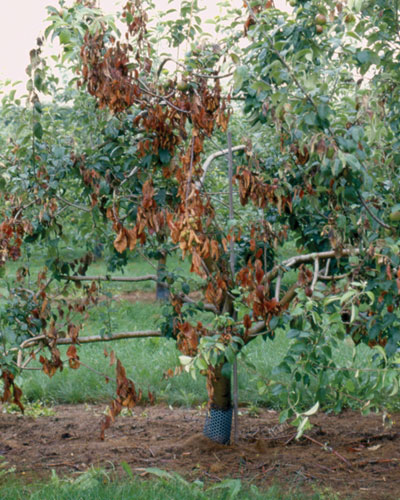
Figure 4-153. Severely infected trees with fire blight appear to be "scorched" by fire
Symptoms
Fire blight attacks many different parts of the tree, and fire blight symptoms are often referred to the part of the tree attacked - blossom, shoot, fruit, limb and trunk, and collar or rootstock blight.
Blossom blight
Blossom blight is observed in the spring when flowers are infected. Infected blooms first appear water soaked and later begin to wilt, shrivel and turn brown or black (Figure 4-154). Pollinating insects visiting contaminated flowers spread the disease to non-infected flowers. Once blooms are infected, blossom blight frequently remains attached to the tree allowing the disease to progress into the flower stem and then into the spur. If the spur on a main branch or the trunk becomes infected, the disease can move from the spur into the trunk or branch eventually developing into a canker which girdles the branch or limb.
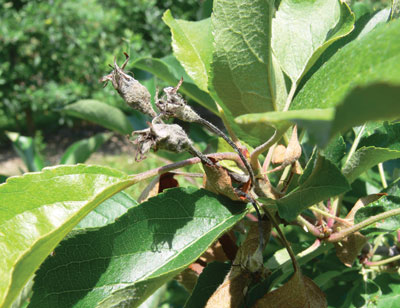
Figure 4-154. Infected blooms first appear water soaked and later begin to wilt, shrivel and turn brown or black
Shoot blight
Succulent shoots and suckers (water sprouts) can also become infected resulting in shoot blight. Infected shoots first appear water-soaked but quickly turn brown or black. Shoot blight develops very quickly once infection takes place. Shoot blight symptoms are observed throughout the spring and summer seasons, especially when fire blight is present in the orchard in infected blossoms, other blighted shoots and overwintering cankers. Injuries on leaves and shoots caused by sand blasting, wind whipping or hail provide an entrance for the bacteria into the susceptible tissue. The bacteria move 15-30 cm or more in the shoot within a few days after infection. As the bacteria move down the shoot, stem tissues become discoloured and shriveled. The infected shoots form an "inverted J" or a shepherds' crook at the tip (Figure 4-155) - often the first symptoms are observed several weeks after bloom. Apple and pear trees with several severely infected shoots appear scorched by fire (Figure 4-156). Initial leaf symptoms appear as brown or black discolouration along the petiole and midvein, while the rest of the leaf tissue remains green. Bacterial ooze along the midvein of infected leaves and the stem of infected shoot is also common (Figure 4-157). Eventually, infected leaves turn brown starting with the tissue along the midvein. Dead leaves often cling to the shoot throughout the growing season and into winter. Usually the shoot tip is the first part affected, and occasionally the base of the shoot is the primary infection point. Fire blight bacteria also move through the vascular tissue of the tree from a canker into the shoot resulting in similar symptoms.
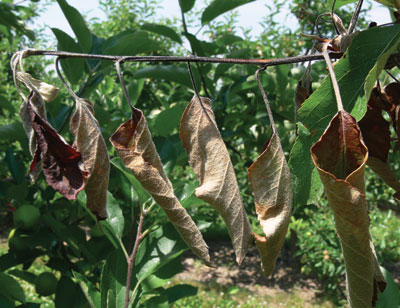
Figure 4-155. Infected shoots form an "inverted J" or a shepherds' crook at the tip
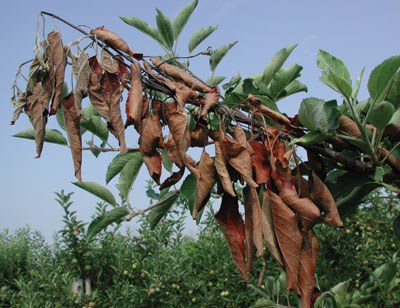
Figure 4-156. Severely infected shoots
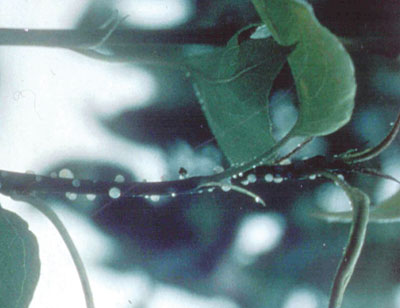
Figure 4-157. Bacterial oozing out from the stem of an infected shoot
Limb and trunk blight
The most severe losses from both blossom and shoot blight occur when the disease progresses into older wood. Fire blight progresses into the main limbs and trunk of the tree from infected spurs or shoots when warm temperatures with high humidity combine to form ideal conditions for fire blight. The cankers that form in the older wood girdle the branch, killing healthy wood from that point outward by cutting off the transport of nutrients and water. The cankers first appear brown to purple in colour. Eventually they become sunken with cracked margins (Figure 4-158). The tissue under the bark initially appears water soaked, eventually with red streaks and finally turns brown. During rainy or very humid periods, bacteria ooze onto the surface of the cankers. At first, bacterial ooze appears a milky white drop but quickly becomes brown upon exposure to air. The ooze dries out and remains as a gummy substance or completely dries to an amber resin-like substance on canker surfaces where it remains for several months. The bacteria in the ooze act as source of inoculum that is spread to other tissues or trees by visiting insects and splashing rain during wet periods. Bacteria are also easily spread from tree to tree on contaminated pruning tools. In the winter, cankers usually dry up and become inactive. In the spring, renewed activity at the margins of cankers results in the extension of the cankers. Infections extend and spread into adjacent water sprouts, shoots and limbs resulting in canker blight. Canker extension may begin before, during or shortly after bloom, depending on the environmental conditions experienced during the spring in the orchard.

Figure 4-158. Fire blight canker becomes sunken with cracked margins with bacteria oozing out onto the surface of the canker
Trauma blight
Trauma blight is an unusual, very destructive phase of fire blight that develops as the result of infections following injuries associated with late frosts (temperatures less than or equal to 3ºC), hail storms or high winds that damage leaves, fruit and shoots. Injuries caused by these events provide an entrance for the pathogen and shock or traumatize trees, reducing their natural defense mechanisms.
Fruit blight
Fruit become infected during the growing season through wounds caused by insects and damage by high winds, rain or hail. Symptoms begin appearing within 24-48 hours after wounding occurs such as after a hail event. Infected fruit first appear grey, green or water soaked (Figure 4-159) and later become shriveled, dark brown and mummified. Infected fruit often remain attached to the spur (Figure 4-160).
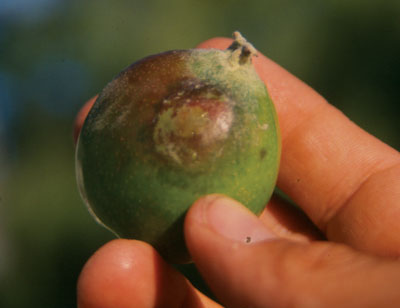
Figure 4-159. Infected fruit first appear grey, green or water soaked
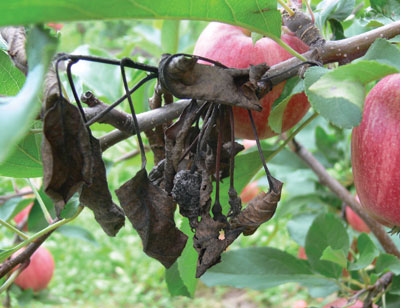
Figure 5-160. Infected fruit become shriveled, dark brown, mummified and remain attached to the spur
Collar and rootstock blight
Collar and rootstock blight occur in susceptible rootstocks such as M.9 and M.26. Collar and rootstock blight often occurs at ground level just below the graft union in the rootstock part of the tree. This type of blight frequently kills trees and is difficult to distinguish from Phytophthora collar rot. Infections initially appear dark, water soaked and purplish - the margins are indefinite or raised and blistered at first, but become definite and marked by a crack or crevice later (Figure 4-161). Upon removal of the bark, the affected area shows red-brown streaking in the internal tissues. Invasion of the fire blight bacteria occurs through infected suckers or water sprouts, washing bacteria from infected twigs and fruit down the trunk, or internal translocation (without vascular tissue symptoms of infection) of the fire blight bacteria from the infected cultivar scion above ground to the rootstock. Tree death particularly in young trees is almost certain when rootstocks become infected.
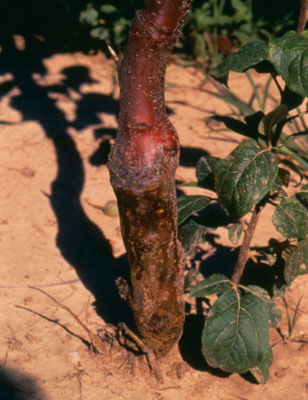
Figure 4-161. Rootstock blight often occurs at ground level just below the graft union in the rootstock part of the tree
Biology
Fire blight bacteria overwinter at the edges of cankers. In the spring, as temperatures increase above 18ºC, cankers become active and droplets containing high numbers of bacteria ooze out of infected bark tissue. The ooze can be rain splashed or carried by insects to open blossoms and tender developing shoot tips. The bacteria also move into the orchard from nearby infected ornamental and wild hosts.
Infection and disease development depends on three events that must happen simultaneously:
- the presence of bacteria
- a susceptible host
- favourable weather conditions
Fire blight bacteria are capable of existing in the orchard environment without infecting or causing disease symptoms. Once favourable environmental conditions occur, bacteria multiply rapidly and enter susceptible tissue resulting in infection and disease. The bacteria grow over a range of temperatures from 4-32ºC, with rapid multiplication leading to infection occuring most frequently when temperatures are between 24-28ºC. Hot, wet weather for an extended period of time favours the multiplication of the pathogen and infection, and encourages the succulent growth of susceptible plant tissue.
Open blossoms are the most susceptible tissues since they provide an opening for bacterial entry. Bacteria are carried to blossoms by wind, rain and insects. Once bacteria are introduced to an open blossom, they multiply very rapidly on stigmas. Free moisture (rain, dew) moves the bacteria into the flower cup (hypanthium). The bacteria pass through the natural openings directly into the host tissue. Further spreading of the pathogen occurs when pollinating insects carry it from infected to non-infected blossoms. Once infection occurs, the disease moves quickly into spurs and other succulent tissues (one- to two-year-old wood), especially if accompanied by warm temperatures. In young nursery plantings and two- and three-year-old trees, the pathogen moves from infected blossom to the root in one month under favourable weather conditions (20-28ºC).
Secondary infections occur throughout the growing season caused by the spread of the bacteria from infected blossoms, and oozing cankers to developing shoots and wounds made by insects, wind, hail or other mechanical means. As the growing season progresses, infections slow down and cankers develop in the bark. They tend to be sunken with indefinite margins at first but later develop cracks and become sealed off from the healthy tissues.
Monitoring and management
Decision support models
Fire blight prediction models help growers time their product applications. Two decision support prediction models, Maryblyt and Cougarblight, have been developed to help growers, consultants and scouts forecast conditions that lead to the infection of apple blossoms. The models are used to assist in timing an application of a control product. For best results using these models, collect and record information separately from different blocks and cultivars. Prediction models are extremely valuable management tools and their use is encouraged for apple growers that have experienced fire blight in their orchard.
Maryblyt
Maryblyt, developed in Maryland over 15 years ago, is a computer software program used to determine the risk of fire blight in an orchard block based on environmental conditions and the susceptible growth stage. To use the Maryblyt model, record the maximum and minimum daily temperature, rainfall or dew events, and the growth stage of trees in the orchard. Based on the information input into the computer model, Maryblyt predicts when blossom infection will occur and provides information on when a bactericide is required. The model also predicts when fire blight symptoms will appear to help growers schedule time for pruning if necessary. If the following conditions develop in sequence, and fire blight bacteria are present, the Maryblyt model predicts blossom infection:
- blossoms are open with petals intact
- passage of 110 degree hours above 18.3°C from first open bloom
- a wetting event of at least 0.25 mm of rain or a heavy dew, or more than 2.5 mm rain the previous day
- an average daily temperature of 15.6°C
Cougar blight
The Cougar blight model was developed by Dr. Timothy J. Smith, Washington State University for apple and pear growers on the west coast where it is used to predict blossom infections with great success. The model uses a spread sheet for growers to use to record leaf wetness and temperature data from the orchard and does not require a computer. As with the Maryblyt model, leaf or blossom wetness, as well as minimum and maximum daily temperatures during the time blossoms are present is recorded along with information about the history of fire blight in and around the orchard. Start collecting weather data within the orchard at least three to five days before the first blossoms open. Follow these instructions to use the Cougar blight model.
- Begin by assessing if the blossoms in each variety or block are wet each morning. A moisture sensor assesses this best, but if this equipment is not available, make a judgment call. When unsure if the blossoms were wet in the morning, err on the side of caution and indicate they were wet. Under the column "Blossom wetness" in the Cougar blight data entry sheet , indicate whether or not the blossoms were wet beside the date of observation.
- Next, enter the maximum and minimum temperature for that day in the columns beside the leaf wetness column in the data input spreadsheet. Temperature recording equipment set up in the orchards is best for accurate results. If this equipment is not available, use information from a local weather forecast but it provides less accuracy. For a list of online sources of weather.
- Input the forecasted temperatures for the next several days as predicted by local forecasts into the Cougar blight data entry sheet ) to predict the risk of fire blight developing in the orchard.
- When inputting the predicted maximum and minimum temperature data, always assume there is a potential for blossom wetness. The actual information can be corrected in that row of the program when it becomes available the next day.
- Look up the daily degree hour values for the minimum and maximum temperatures recorded and the predicted minimum and maximum temperature for the next four days. Input the values in the column beside the corresponding maximum and minimum temperatures
- Once information is in the program for four consecutive days, add the four daily degree values and place in the "four day total daily degree" column beside the last day of information inputted.
To interpret the risk of fire blight in the orchard, the history of fire blight in and around that orchard must be known. Choose the row in the Score chart that best describes the fire blight history and situation for the orchard that a risk assessment is being made.
- If the orchard had no fire blight history within it, the first column of risk warnings will provide the risk assessment.
- If the orchard had fire blight in it or in a neighbouring orchard, use the second column for risk assessment.
- If the orchard or neighbouring orchard is known to have active cankers, use the third column of the program to assess the fire blight risk.
Using the "four day total daily degree" based on the information put into the spreadsheet, look up the risk of fire blight in the orchard in the Score chart.
One of four risk assessment statements at the top of the Score chart:
- A low risk assessment indicates conditions are not favourable for fire blight development at that time.
- A caution risk assessment indicates conditions may be favourable for fire blight development. Be vigilant if open blossoms are present and the flowers were wet either from dew or rain.
- If the risk assessment for the forecasted days indicates a high risk and active fire blight is in the region, an application of streptomycin is required immediately.
- If the risk assessment indicates an extreme fire blight risk based on the predicted weather data, the conditions for fire blight bacteria to multiply and infect are approaching and an application of streptomycin is required before that predicted date.
Using the current day's high and low temperatures and the predicted temperatures allows growers to assess the potential of fire blight risk in the orchard before infection occurs and take action prior.
An Excel spreadsheet program has been created based on the Cougar blight model and is available from Agriculture and Agri-Food Canada Pest Management Centre. The program does not require a great deal of computer knowledge and weather data and information. Based on the information entered, the program automatically predicts the risk of fire blight in a particular orchard. For more information on the Cougar blight model visit the Washington State University website.
Cultivar and rootstock susceptibility
All apple cultivars and rootstocks are susceptible to fire blight, however some are less susceptible than others (Table 4-12. Relative fire blight resistance of apple varieties and rootstocks). When planning new plantings, particularly in southwestern Ontario (below a line from Sarnia to Oakville), consider fire blight susceptibility when deciding what cultivars and rootstocks to plant (see Table 4-12).
In addition to potentially experiencing serious economic losses in a fire blight prone growing season, susceptible cultivars also constitute a serious source of inoculum to less susceptible varieties in the orchard.
| Varieties | Least susceptible | Moderately susceptible | Highly susceptible |
|---|---|---|---|
| Apple | Enterprise Freedom Jonafree Liberty Macfree Northern Spy Red Delicious Redfree | Ambrosia | Braeburn Fuji Gala and Gala-types Ginger Gold Golden Russet Idared Jonagold Jonathan Lodi Mutsu Paula Red Pink Lady Rome Rome Beauty Spigold Tydeman Wealthy Winter Banana Yellow Transparent |
| Crab apple | Dolgo | Manchurian Snowdrift | |
| Rootstock | M.7 B.95 Robusta 5 Cornell-Geneva (CG) series 5 | MM.106 MM.111 M.41 | M.9 M.26 M.27 Mark Ottawa 3 |
* resistance ratings are not exact, and can be influenced by growing conditions
Cultural management practices
To reduce the risk of fire blight incidence and spread in the orchard, the following cultural management practices are recommended.
- Avoid over fertilizing with nitrogen. Excess nitrogen stimulates succulent growth that is susceptible to fire blight infection. Apply nitrogen fertilizer only where warranted by annual leaf analysis. Consider a split application of nutrients, half in the spring before growth starts and half again after petal fall. If severe blossom blight occurs, withhold the later application. Similarly, avoid late cultivation that can make nitrogen available to the tree resulting in late succulent growth.
- In healthy trees, avoid excessive winter pruning which stimulates vegetative growth the following growing season. Regular annual pruning and minimizing the number of cuts made keeps the tree "calmer".
- Delay summer pruning until terminal bud set has occurred (i.e. terminals "hardened off"), generally by early to mid August. Summer pruning to increase fruiting wood in high-density apple orchards encourages new shoot growth and extends the susceptibility period for shoot blight. If fire blight is present, disinfect pruning tools between each cut. However, sterilizing pruning tools is not required if the pruning is done well beyond the infection (30 cm beyond the visible symptom) such that the pruned section does not have dark concentric sections. In older orchards that are severely infected with fire blight, avoid summer pruning altogether. Remove spurs on the main trunk and scaffold limbs to eliminate their potential of infection.
- Suckers (water sprouts) are good entry points for fire blight into large branches, limbs and trunks. Break them out periodically during the early growing season (i.e. June).
- Prune infected trees during the dormant season to remove all overwintering cankers and sources of inoculum. Prune well beyond visibly infected areas.
- Avoid using overhead irrigating to prevent excessive vegetative growth and reduce the spread of bacteria within the orchard.
- Maintain good integrated pest management practices to minimize the spread of the fire blight bacteria by insects and to reduce insect-caused wounds to leaf and shoot tissue, which act as entry points for the bacteria. Good control of plant-sucking insects such as leafhoppers, aphids and plant bugs is particularly important. Conduct frequent (weekly) insect pest monitoring and use appropriate control measures where warranted.
- Closely monitor non-orchard sources of fire blight such as susceptible ornamental plants or abandoned apple trees, hawthorn, mountain ash, cotoneaster and quince that are close to commercial orchards for signs of fire blight and cankers. Overwintering cankers are one of the primary sources of bacteria for subsequent infections. If possible, remove these host tree and shrubs from the vicinity of the orchards.
- Scout orchards twice a week starting at bloom for blossom infections. Prompt removal of early bloom infections significantly reduces the impact of the disease later on in the season. Remove infected spurs by cutting at least 15 cm beyond the farthest signs of infection. If continual blossom blight is observed in a particular area of the orchard, scout for an active canker in the vicinity and remove it promptly.
When fire blight appears year after year in an orchard, use a more aggressive approach to keep this disease managed. For more information on managing fire blight see OMAFRA Publication 360, Guide to Fruit Production.
Pruning tips
Prune out fire blight infected limbs and branches by cutting about 30 cm or more beyond the visible symptom into two-year-old or older wood. Proper pruning beyond infected tissue does not require disinfecting pruning tools between cuts. However, in situations where pruning is conducted by inexperienced personnel, use disinfected pruning tools.
Ugly stub method of pruning
If an orchard becomes severely infected with fire blight, consider pruning out active blighted strikes using the ugly stub method. Cut out the strikes when symptoms first appear and before extensive necrosis develops. Make cuts 30 cm or more beyond the visible symptom in at least two-year-old wood or older, being careful not to cut back to the next healthy limb or spur. This will result in leaving at least a 13 cm naked or ugly stub. Paint the stub with a bright colour for easy identification in the dormant period. Avoid excessive cutting that stimulates the development of succulent growth and extends the susceptible period for shoot blight infection. A small canker may develop on the ugly stub but the tree usually confines the disease to the ugly stub. During the dormant period, prune all ugly stubs from the tree.
Biological control agents
Serenade Max, Bloomtime and BlightBan are biological products registered for the suppression of fire blight in apples. For more information on these products, see OMAFRA Publication 360, Guide to Fruit Production.
Growth regulators
Apogee is a growth regulator registered in Canada for shoot control in apples. Studies show this product also helps reduce the incidence and severity of fire blight in orchards when applied according to label recommendations. Apogee has no direct affect on the fire blight pathogen, but reduces the vegetative growth of susceptible shoots and stimulates the plants defense system to reduce infections. It is not a silver bullet for fire blight control but another tool to help reduce the risk of disease. For more information on the use of Apogee for fire blight, see OMAFRA Publication 360, Guide to Fruit Production.
Resistance management
Streptomycin-resistant strains have been identified in British Columbia, Michigan, New York, California, Washington, Oregon, Greece and Egypt. A survey in the early 1990s of apple and pear blocks in southern Ontario indicated all strains of fire blight remained susceptible to streptomycin in Ontario.
Copper-resistant strains have been identified in Egyptian isolates and may be present in some strains of the fire blight bacteria in North America.
Limiting the number of applications to three per season for each product decreases the selection pressure and slows down the development of resistance to both copper and streptomycin. See labels for pre-harvest interval for streptomycin.